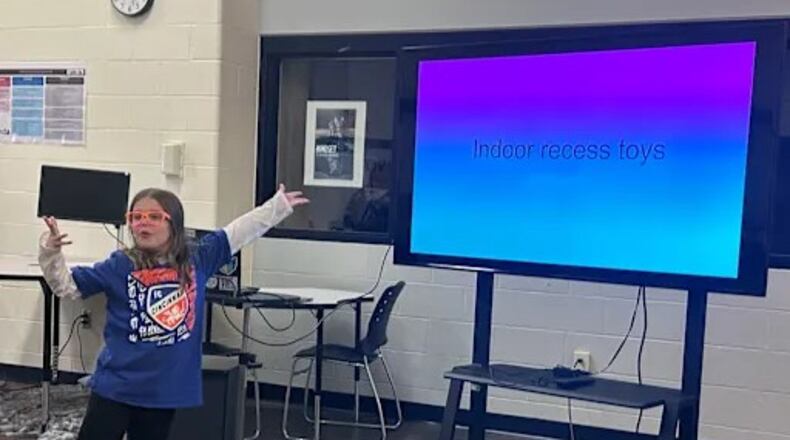The grant proposal program, which sees the PTO review in-person grant presentations from participating students as they pitch their ideas to improve their school, provides multiple learning opportunities, according to Lakota officials.
“I love that the PTO is able to sponsor a program that gives the students real world experience,” said Endeavor PTO President Trisha Dunkerly. “I love giving them a voice and showing them that they are heard and valued.”
The PTO-sponsored program generated more than 40 grant proposals from students in 2024, with 28 projects winning funding approval.
One sixth grade team proposed a beautification project that involves painting rocks to display around the school’s entrance sign and a third grader - originally from Vietnam - requested more globes for classrooms to spur more conversation and learning about different parts of the world.
Other ideas ranged from improved indoor and outdoor recess activities to more flexible seating options.
Each year, the Endeavor PTO designates anywhere from $1,000 to $1,500 to fund such proposals.
Lakota officials said a written application details the educational item they are seeking, how it would be used and how much it would cost. Students are also encouraged to collaborate with their teacher on their ideas to ensure they are practical and align with their classroom needs and goals.
If selected, individual or small groups of students then present their proposal to the principal and a panel of PTO representatives.
Endeavor Principal LeAnna Webber said: “As a bonus, they learn real-world skills like collaboration, communication, and financial literacy by writing a proposal, presenting it to a real committee, and budgeting the cost of their project.”
As the participating students progress into older grades, the PTO members said they also enjoy watching their maturation and skill-level growth in the process.
Dunkerly said she especially enjoyed seeing sixth graders present for a fourth year in a row.
“That really showed in the quality of their slides and their speaking abilities during the presentations,” she said. “I love seeing their confidence grow year after year.”
Even if their ideas are not accepted for funding, much is learned through by the children through the grant proposal process, said Webber.
“It’s an opportunity for students to use their voice to advocate for themselves. That, alone, is a big lesson to learn.”
About the Author
